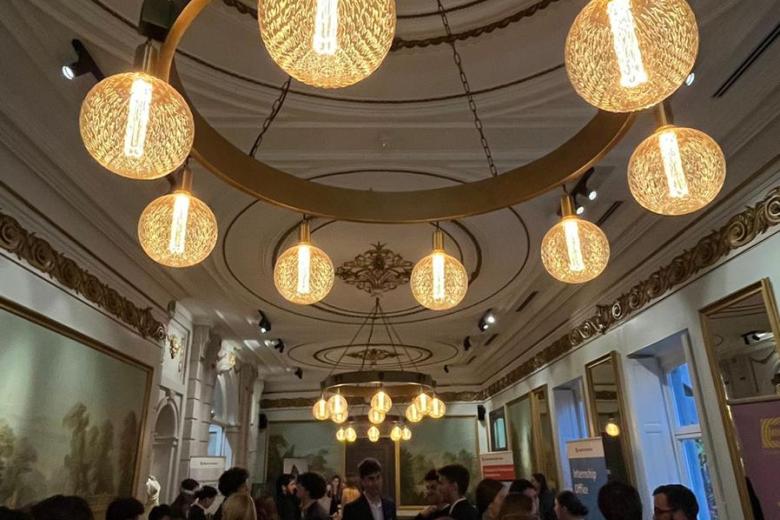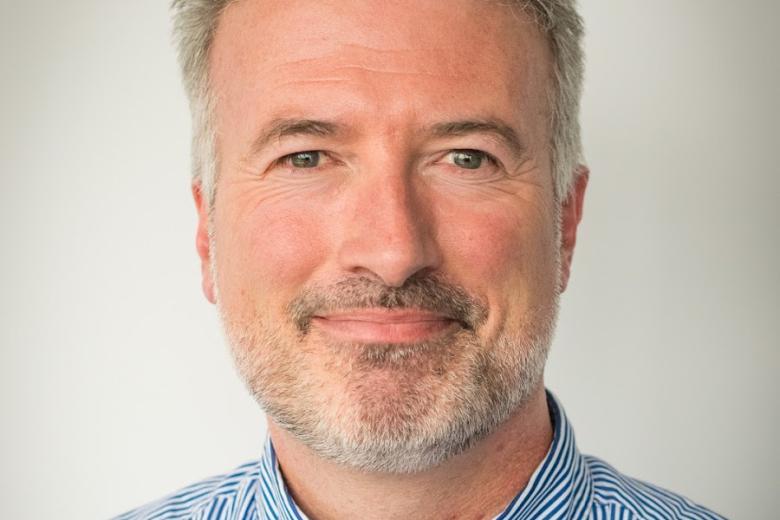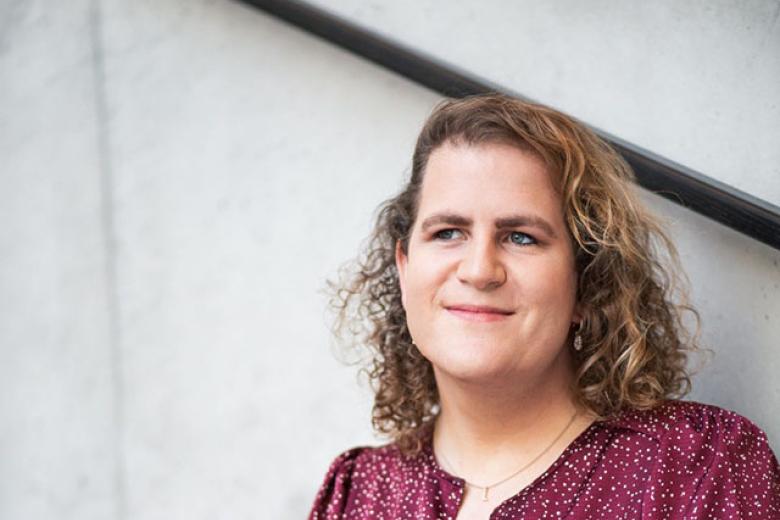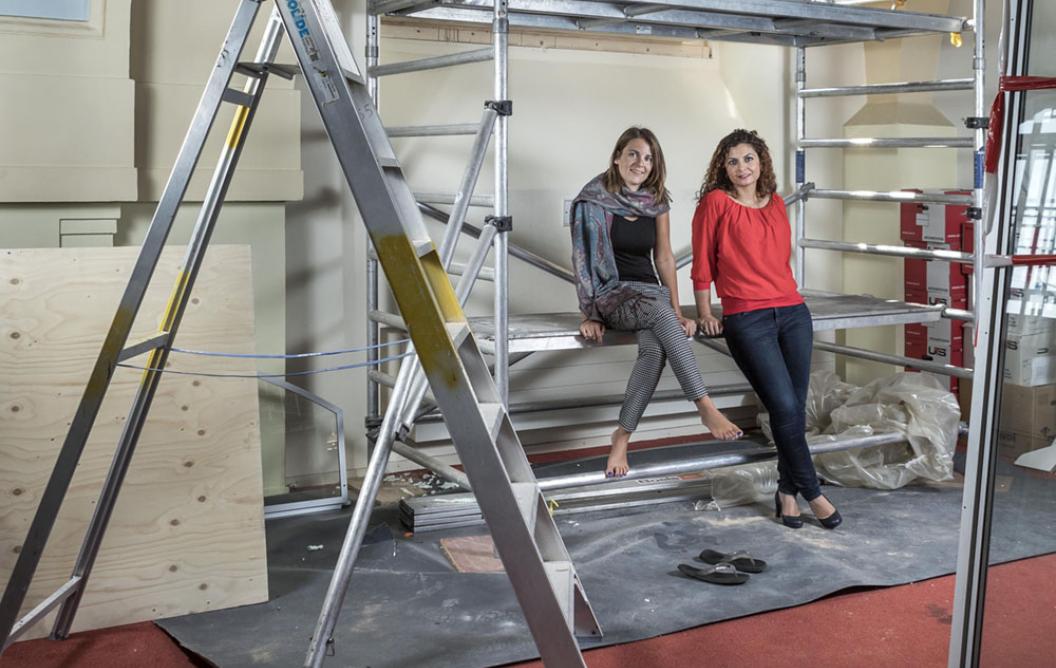Crowdfunding in academia: exception or future reality?
If you can’t persuade official funding bodies of the merit of your research proposal, is crowdfunding a viable alternative? Some researchers are already using online platforms and social media campaigns to raise money for their work. Here, Chahinda Ghossein-Doha and Marieke Hopman talk about their experiences with crowdfunding. Does the effort outweigh the benefits?
No, says Hopman right off the bat. And she would know: she was one of the first people in the Netherlands to crowdfund her PhD research, attracting the attention of the national press along the way. “But I’d already been involved crowdfunding before that. During my master’s in philosophy at the UvA I met General Roméo Dallaire, the leader of the UM relief mission in Rwanda, at the screening of a documentary on child soldiers. It made such an impression on me that I decided to do the fieldwork for my thesis on child soldiers in Rwanda. But I didn’t have the money for the trip. That’s how it started.” Most donors were friends and family. “But some of them I didn’t know personally. They kept tabs on the research and even came to my graduation. That’s how engaged they felt, which is great.”
Putting yourself on the market
After her master’s, Hopman wanted nothing more than to carry on with this kind of legal-philosophical, field-based research on children’s rights. She submitted a research proposal to the Netherlands Organisation for Scientific Research (NWO) in the hope of funding her PhD. When that was rejected, she turned once more to crowdfunding. Together with the Limburg University Fund, Hopman set up the Children’s Rights Research Fund. Each year she has to raise €30,000. “I spent the first three months crowdfunding full time. All my friends contributed something: we made a campaign song you could download from ITunes and a video. I did a bunch of media appearances, I have a website and I’m active on social media. Crowdfunding only works if you involve a lot of people. You’re constantly trying to get people on board. That said, I get most of the money not from donors, but by doing a lot of voluntary work alongside my research. Those organisations will then donate to my fund. And I get that work, in turn, through my crowdfunding initiatives. It’s all linked. You put yourself on the market, people know about your research and one thing leads to another.”
Thinking outside the box
Ghossein-Doha can relate to Hopman’s experience. Crowdfunding is time-consuming, but it does put your research in the spotlight. Ghossein-Doha stumbled across crowdfunding through the Dutch Heart Foundation. After completing her PhD two years ago, she submitted a grant application for a large-scale postdoctoral project on the relationship between abnormalities in the blood vessels of the placenta and in the coronary artery of the heart. “If I can demonstrate that relationship, you could study the arterial calcification of a woman’s placenta after she has given birth and use that as a predictor of the risk of later heart failure. You could monitor those women from an earlier stage and give preventive medication or lifestyle advice to reduce the risk of cardiovascular diseases. I came up with this idea through my PhD research and that of a colleague. It was an out-of-the-box idea, because so far no one’s demonstrated a link between the placenta and the prediction of cardiovascular diseases.”
Her proposal was rejected because this link was deemed improbable. Ghossein-Doha spent the following year doing research alongside her work as a cardiology trainee to gather more evidence for her hypothesis. “I believe in it and I want to prove it, so you have to take those extra steps.”
Persuasive speaker
Based on the new research material she received an innovation grant from the Heart Foundation, which entailed raising a portion of the money herself through crowdfunding. “We were given workshops on presenting, they made a video and we were able to use their platform. I learnt to explain my research in an accessible way and to pique people’s interest. Social media worked best, I found. Many of the reactions applauded the fact that I was raising the money myself. Initially you use your own network: family and friends. My husband was my first donor, and it spread from there. The highest individual contribution was €150, the larger amounts came from businesses. I still give many lectures about my research even though the crowdfunding campaign is over, because it’s important to stay in touch with your donors. You never know when you’ll come across that one really rich donor.” Evidently, Ghossein-Doha is a persuasive speaker: she managed to raise €43,000 in three months. The Heart Foundation matches every euro up to a maximum of €30,000, which gave her a total of €73,000 to run her pilot study. This, she is hoping, will ultimately turn into a full-fledged research project funded by the Heart Foundation.
Making a difference
Two stories, one conclusion: you need an unshakeable belief in your research and a great deal of perseverance. “I’ve always been ambitious,” Ghossein-Doha says. “My parents fled Lebanon and had to give up a lot. They did that for their children. I want to get the most out of the sacrifices my parents made – but also I just enjoy doing it.” It was a personal choice to focus on pre-eclampsia. “I’m a mother of three myself. Although I didn’t have pre-eclampsia, I know how it feels when something goes wrong during pregnancy: my first daughter died of a genetic disorder at 10 days old. You always carry that with you. Six years later I still have unanswered questions: what does it mean for me, for my other children? I don’t study that genetic disorder myself, it’s too close to home, but I hope my research can provide answers for mothers in a comparable situation. Just as I hope other researchers will someday be able to give me answers.”
Hopman, too, is certain her research can make a difference. “During my PhD I came up with a new way of researching children’s rights. It’s not so much about what the law says, but about how children experience that law in their everyday lives. The method is based on Socratic dialogue, talking with children openly and on equal terms and really listening to them. I want to give them a voice, so that local authorities can make better policies and NGOs can improve their interventions.” She hopes to complete her PhD later this year, and is already writing a grant application for a follow-up study. “It’s an NWO grant worth half a million euros, which, with my crowdfunding experience, I’ll be able to turn into €800,000. I’ve already approached the NGOs I collaborate with to see if they want to contribute time or money, and personally I’ll do more work than I’m paid for. That way I’ll be able to support two PhD students in Somaliland. Stretching money like this is in my blood: I grew up with very little, so I’m very aware of the value of money and I can live very frugally. And I’m an idealist.”
Exception
For young researchers, crowdfunding is not yet the goose that lays golden eggs. “It takes a lot of time and work, an incredible amount of energy,” Hopman says. “I found the experience instructive, but also intense,” says Ghossein-Doha. “For me it was a third job, alongside my specialist training and my research.”
Also read
-
Maastricht Business Days 2024: Building bridges between talent and opportunity.
The Maastricht Business Days (MBD) have been a hallmark of the School of Business and Economics (SBE) since their inception in 1996, standing out as the most prestigious student recruitment event. Organized by SCOPE, the faculty’s dynamic study association, the MBDs connect over 600 students annually...
-
Empowering Smallholder Farmers in the Data Economy: Unlocking Opportunities and Overcoming Obstacles
Frederik Claasen, the head of policy at our partner organisation Solidaridad Network on the opportunities and obstacles facing smallholder farmers in their data ecosystems.
-
Soft landing in Vienna
After several rocky years, Maastricht University alum Lea Vink has found her feet in Vienna. Professionally, she is taking new steps at the crossroads of aviation and organisational psychology. And on a personal level, luck has smiled on her since her transition from man to woman.
